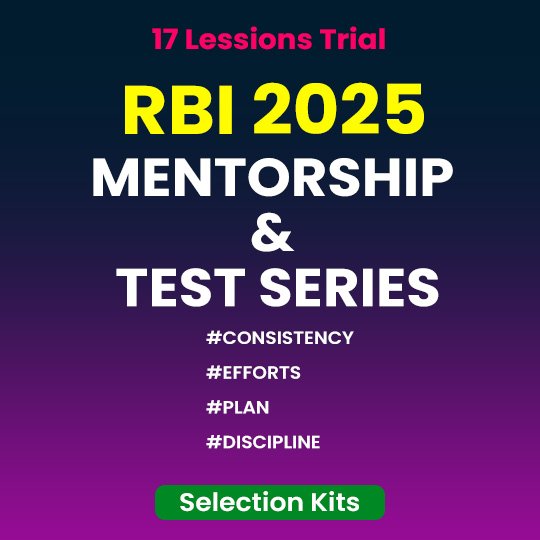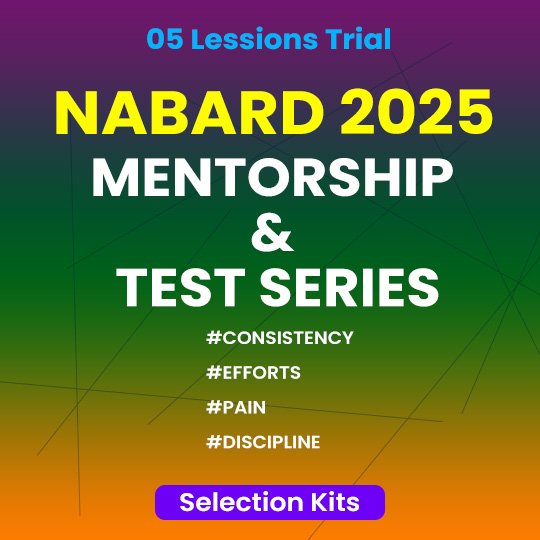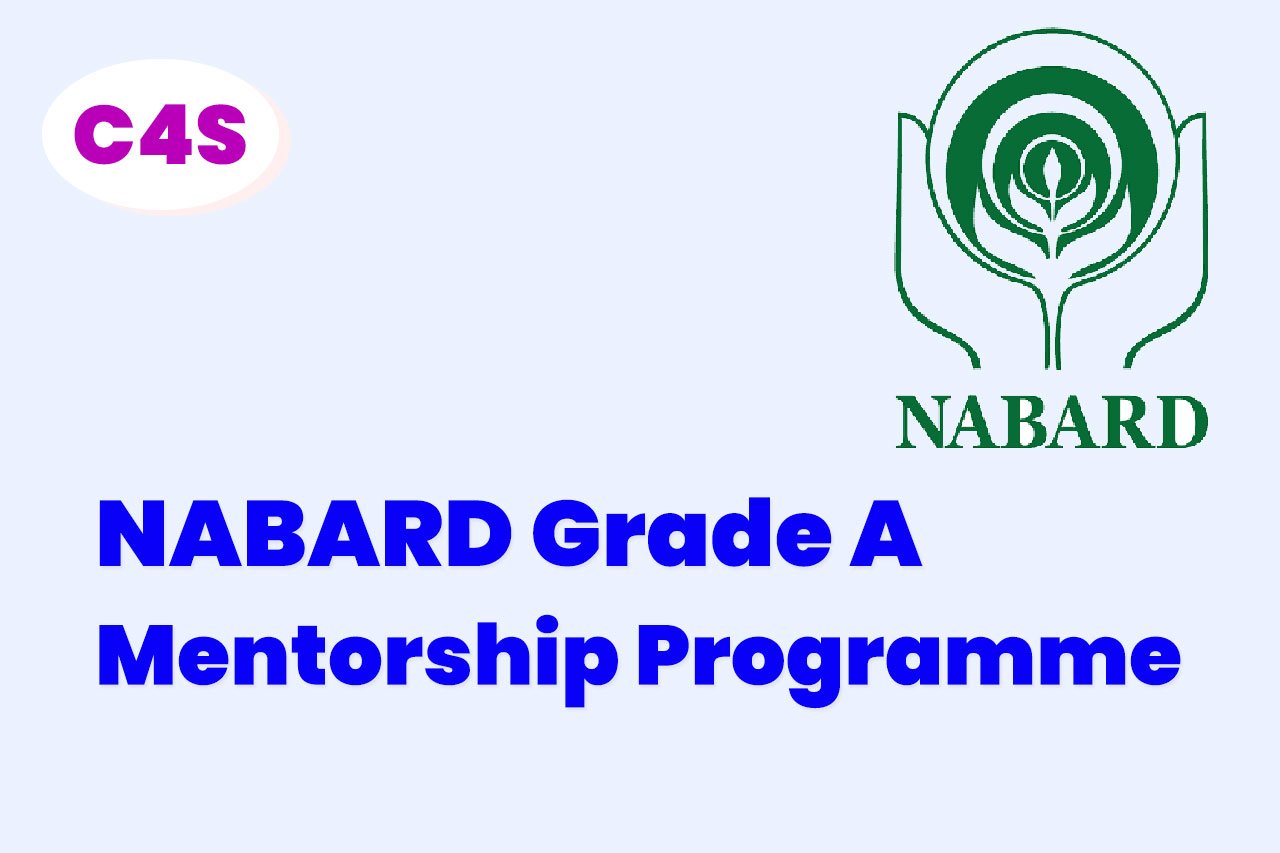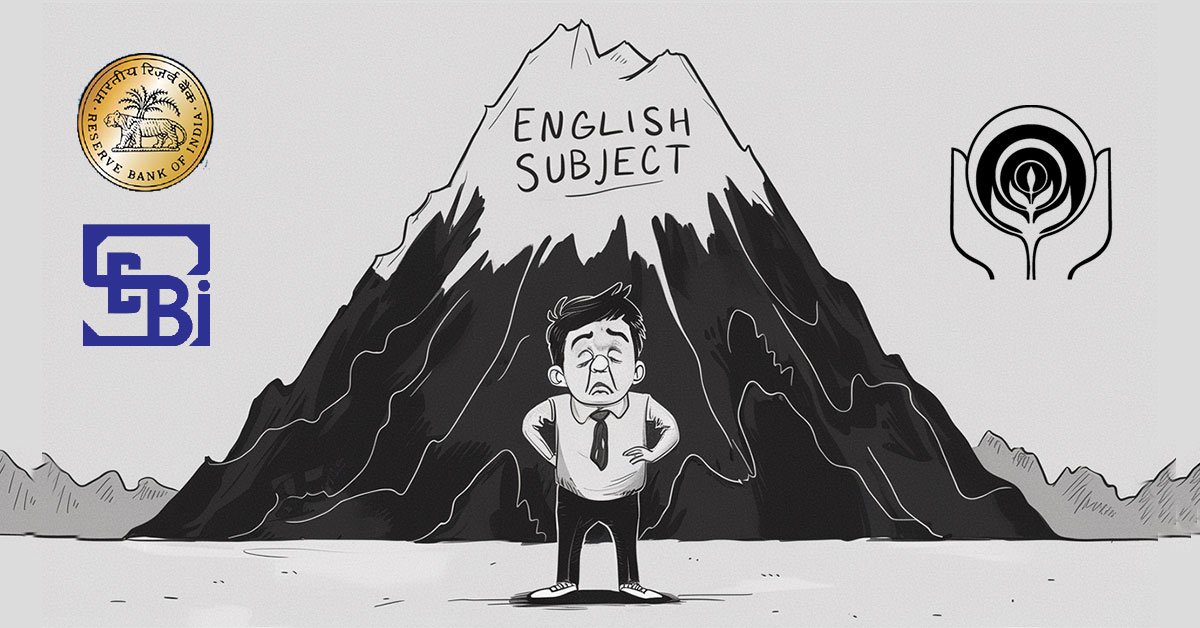Daily Current Affairs Quiz
6&7 July, 2025
International Affairs
1. BRICS Summit in Rio de Janeiro, Brazil
Context:
Prime Minister Narendra Modi is attending the BRICS Summit (July 6–7) in Rio de Janeiro, Brazil, alongside leaders from the original five member countries and the newly inducted members — Egypt, Ethiopia, UAE, Iran, and Indonesia.
Key Highlights from the Summit
- Geopolitical Focus & Terrorism
- PM Modi will push for a strong joint statement on terrorism, particularly condemning the Pahalgam terror attack and supporting Operation Sindoor.
- BRICS Foreign Ministers had already included a condemnation in their April 2025 Chair Summary.
- A robust paragraph in the Leaders’ Joint Statement is expected.
- De-Dollarisation & Local Currency Trade
- No BRICS currency is being launched.
- BRICS is promoting voluntary trade in local currencies, not anti-dollar, similar to MERCOSUR’s model.
- US tariff threats (100–500%) are acknowledged but viewed as misplaced.
- Major Deliverables Expected
- Climate Change Financing Declaration
- AI Regulation & Governance Framework
- Partnership on Socially Determined Diseases (poverty and inequality-driven diseases)
- Most sessions will be open to partner/invited countries, signaling greater transparency and inclusivity.
- Expansion & Cohesion
- Saudi Arabia’s membership is still pending.
- Brazil emphasizes consensus and diversity, not confrontation—supporting BRICS’ Global South character.
India–Brazil Bilateral Engagement
- PM Modi to meet President Lula in Brasilia post-summit.
- Focus areas for enhanced cooperation:
- Defence, Agriculture, Energy, Pharmaceuticals, Digital tech, and AI.
- Over 110 bilateral missions (trade + govt) conducted in past two years.
National Affairs
1. India and Trinidad & Tobago Sign Key Agreements
Context:
During Prime Minister Narendra Modi’s official visit to Trinidad and Tobago, the two nations signed at least six bilateral agreements, signaling stronger engagement in economic, developmental, and global partnership domains.
Key Highlights:
- Sectoral Cooperation:
- Financial & Pharmaceutical Ties:
The agreements will open doors for India’s financial services and pharma sectors to expand in the Caribbean region, positioning India as a key development partner.
- Financial & Pharmaceutical Ties:
- Multilateral Engagements:
- Trinidad & Tobago joins India’s global initiatives:
- Coalition for Disaster Resilient Infrastructure (CDRI)
- Global Biofuel Alliance (GBA)
These moves align both nations with global sustainability and climate resilience goals.
- Trinidad & Tobago joins India’s global initiatives:
- Developmental Assistance:
- Quick Impact Projects (QIPs) Grant Agreement:
- India to fund up to five short-term projects per year (max $50,000 each).
- Focused on grassroots development with fast-track execution.
- Quick Impact Projects (QIPs) Grant Agreement:
- Education & Digital Transformation:
- Gift of 2,000 laptops to school students announced by PM Modi.
- Supports T&T PM Kamla Persad-Bissessar’s digitisation of education vision.
- Gift of 2,000 laptops to school students announced by PM Modi.
- Agricultural Partnership:
- India delivered $1 million worth of agro-machinery to NAMDEVCO.
- Additional support pledged for:
- Millet cultivation
- Seaweed-based fertilizers
- Promotion of natural farming techniques
About Trinidad and Tobago
- Official Name: Republic of Trinidad and Tobago
- Location: Southernmost island country in the Caribbean
- Geography: Comprises two main islands — Trinidad and Tobago — and several smaller islets
- Capital City: Port of Spain
- President: Christine Kangaloo
- Prime Minister: Kamla Persad-Bissessar
2. Nipah Virus (NiV)
Context:
Kerala has once again reported the presence of the Nipah virus, marking the eighth emergence in as many years. While the state has become adept at containing the virus, critical knowledge gaps remain regarding how the virus spills over from bats to humans.
What is Nipah Virus (NiV)?
- Type: RNA virus from the Henipavirus genus, closely related to the Hendra virus.
- Nature: Zoonotic disease — transmitted from animals to humans.
- Natural Host: Fruit bats (Pteropus species), also known as flying foxes, are the natural reservoir.
Transmission Routes
- Direct contact with infected animals (especially pigs)
- Consumption of contaminated food (e.g. raw date palm sap)
- Human-to-human and animal-to-human transmission observed.
Symptoms of NiV Infection
- Acute respiratory illness
- Seizures
- Encephalitis (swelling of the brain)
- Confusion, coma, and potentially death
- Incubation Period
- Typically 4 to 14 days, but can extend up to 45 days in some cases.
- Fatality Rate
- 40% to 75%, among the highest for zoonotic infections
Why are NiV outbreaks recurring in Kerala?
- Endemic status of NiV in fruit bats in Kerala.
- Proximity of human settlements to forested areas, increasing human-bat contact.
- Robust healthcare surveillance in Kerala helps identify and report NiV outbreaks early.
- Other states may be underreporting or missing cases due to weaker surveillance.
3. Gini Index: World Bank Report
Context:
A recent World Bank report ranked India among the most equal countries globally based on its Gini index for 2022–23, pegged at 25.5—placing it fourth after the Slovak Republic, Slovenia, and Belarus. However, economists and policy experts have raised serious concerns about data limitations, sampling flaws, and methodological choices that may understate inequality in the country.
What Is the Gini Index?
- A statistical measure of inequality, ranging from 0 (perfect equality) to 100 (absolute inequality).
- The World Bank report used consumption expenditure data to calculate the Gini index for India.
Key Highlights:
- Gini Index Score:
- India’s Gini Index (2022–23): 25.5
- Global Rank: 4th most equal country
- Countries with better Gini scores:
- Slovak Republic
- Slovenia
- Belarus
- Understanding the Gini Index:
- Measures income or consumption inequality on a scale from 0 to 100.
- 0 = Perfect equality, 100 = Absolute inequality (one person has all the income/wealth).
- India’s score places it in the “moderately low inequality” category (25–30 range).
- Comparative Scores:
- China: 35.7
- United States: 41.8
- UK: 32.4
- India is close to entering the “low inequality” category (<25).
- Decline in Extreme Poverty:
- Dropped from 16.2% in 2011–12 to 2.3% in 2022–23
- Indicates broad-based improvement in living standards across income groups.
- Government Attribution:
- India’s progress credited to:
- Welfare schemes and pro-poor policies
- Expansion of financial inclusion, digital infrastructure, and social safety nets
- India’s progress credited to:
Decline in Extreme Poverty
- 171 million Indians exited extreme poverty between 2011 and 2023.
- The share of people living on less than $2.15/day dropped from 16.2% (2011–12) to just 2.3% in 2022–23.
- Under the revised World Bank threshold of $3/day, the extreme poverty rate for India is 5.3%.
Drivers of India’s Improved Equality
The steady decline in inequality is attributed to targeted government initiatives that expanded financial inclusion, direct benefit transfers, healthcare access, and rural empowerment. Key programmes include:
- PM Jan Dhan Yojana: Over 55 crore bank accounts opened.
- Aadhaar and DBT: Enabled real-time, targeted welfare delivery, saving ₹3.48 lakh crore.
- Ayushman Bharat: Over 41 crore health cards issued with ₹5 lakh coverage.
- Stand-Up India: ₹62,807 crore sanctioned to SC/ST and women entrepreneurs.
- PMGKAY: Food grains distributed to 80 crore beneficiaries.
- PM Vishwakarma Yojana: Nearly 30 lakh artisans registered for credit and training.
TH, BS & TET
4. India Launches Phenome India “National Biobank”
Context:
Union Minister of State (Independent Charge) for Science & Technology and CSIR Vice President Dr. Jitendra Singh inaugurated the Phenome India National Biobank at CSIR-IGIB in New Delhi. This state-of-the-art facility is a key milestone in India’s effort to build a comprehensive longitudinal health database to facilitate personalised treatment and precision medicine.
About the Phenome India National Biobank
- Modelled after UK Biobank, tailored to India’s diverse population.
- Will collect genomic, clinical, and lifestyle data from 10,000 individuals across India.
- Aims to tackle complex diseases such as:
- Diabetes
- Cardiovascular diseases
- Cancer
- Rare genetic disorders
Biobank
A biobank is a collection of biological samples (like blood, tissue, or DNA) and associated information (like health records or family history) that are stored and managed for research purposes. They are crucial for advancing medical and health research by providing researchers with access to a large pool of well-characterized samples and data.
Banking/Finance
1. PM Jan Dhan Accounts
Context:
In response to rising instances of cyber fraud and money laundering, the Government of India has advised state-owned banks to close inoperative PM Jan Dhan Yojana (PMJDY) accounts that are increasingly being exploited as mule accounts.
Key Developments
- Inoperative Accounts Closure
- Accounts with no customer-driven transactions for 24+ months are marked as inoperative.
- Banks are initiating closures of such accounts if KYC is not updated.
- A nationwide re-KYC drive is underway, especially for older PMJDY accounts.
- Fraud & Mule Account Concerns
- Inactive accounts are increasingly misused as mule accounts for cybercrime and money laundering.
- RBI’s Mule Hunter (AI-ML tool) has been deployed to detect such accounts.
- Impact
- Retail depositors bear the brunt of mule account frauds.
- The issue highlights the need for policy clarity, improved customer awareness, and stronger account surveillance.
Pradhan Mantri Jan Dhan Yojana (PMJDY)
Launch Date:
August 28, 2014
Objective:
To promote financial inclusion by providing affordable access to:
- Banking/savings accounts
- Remittance services
- Credit
- Insurance
- Pension
Eligibility Criteria
- Must be an Indian citizen
- Age: 18 to 59 years
- Minors above 10 years can open accounts with parental/guardian supervision
Account Features
- Can be opened at any bank branch or Bank Mitr (Business Correspondent) outlet
- Zero balance required to open the account
- Chequebook facility available only if minimum balance is maintained
- Comes with a RuPay debit card for cash withdrawals at ATMs
BS
2. Payments Ecosystem in India
Introduction:
India’s digital payment ecosystem is being powered by multiple platforms—UPI, Aadhaar Enabled Payment System (AePS), Payment Aggregators (PAs), and Prepaid Payment Instruments (PPIs)—each serving distinct use cases but collectively advancing financial inclusion, especially in rural and semi-urban India.
Aadhaar Enabled Payment System (AePS)
- What is AePS?
- Launched in 2011, AePS allows interoperable banking transactions at micro-ATMs using Aadhaar and biometric authentication.
- Operated by NPCI, it enables cash withdrawals, deposits, fund transfers, and balance enquiries without a card or phone.
- Scale of AePS (May 2025):
- Focus area: rural and semi-urban regions.
- Key Issue: Fraud Risk
- Between Jan 2019–May 2023: ₹585.79 crore lost to fraud out of ₹10,247 crore AePS transactions.
- RBI’s June 2025 guidelines aim to:
- Strengthen KYC norms for ATOs (AePS Touchpoint Operators).
- Mandate periodic monitoring of transaction patterns.
- Classify ATOs based on risk profile, type (mobile/static), and transaction velocity.
- Corporate-BCs Left Out:
- RBI guidelines do not address corporate business correspondents, the intermediaries connecting banks to ATOs.
UPI: India’s Flagship Digital Payments Channel
- Overview:
- Launched in 2016, UPI enables real-time person-to-person and merchant transactions using mobile apps.
- Users can link multiple bank accounts to one UPI-enabled app.
- Scale of UPI (May 2025):
- 18.68 billion transactions worth ₹25.14 trillion.
- Backbone for urban and semi-urban digital commerce.
Challenges in AePS vs. BC Model
- Public Sector Banks (PSBs) still prefer BCs over ATOs, capping AePS transactions to manage cost.
- For example:
- ATM interchange fee: ₹19 (flat).
- This creates access barriers for customers and defeats AePS’s convenience potential.
- Cash Deposit Interoperability Lag:
- Only a few banks support interoperable cash deposits via AePS.
- RBI may explore third-party deposit enablement, allowing Person A to deposit cash into Person B’s account.
- RBI has granted in-principle approval to 32 physical PAs.
- Recommendation:
- Allow QR-code-based cash withdrawal to transform PAs into micro-ATMs.
Prepaid Payment Instruments (PPIs)
- Operators include: Amazon Pay, MobiKwik, Spice Money, Pine Labs, and some NBFCs/banks.
- BBPS Restrictions:
- Recent RBI guidelines disallow loan EMI payments via wallets funded by credit cards.
- Issue: Since money is fungible, enforcing source tracking is complex.
- Recommendation:
- Allow wallet-based loan repayment (including current dues) to reduce collection costs, especially in microfinance.
Way Forward
India’s digital payment landscape is undergoing rapid transformation:
- UPI has made India a global leader in real-time retail payments.
- AePS ensures last-mile financial access in the rural economy.
- Payment Aggregators and PPIs are filling service gaps in merchant payments and stored value tools.
Yet, to achieve holistic financial inclusion, the RBI must address gaps in:
- Fraud prevention (especially for AePS and ATOs),
- Regulatory parity (for corporate BCs and PPIs),
- Interoperability and transaction caps (especially for PSBs and AePS).
3. The Monetary Multiverse: SBI Report
Context:
A recent report by the State Bank of India (SBI), titled “The Monetary Multiverse”, suggests that subtle cues in RBI Governor Sanjay Malhotra’s speeches and attire may reflect underlying shifts in the central bank’s monetary policy stance. Though intended “on a lighter note,” the analysis reveals interesting patterns in language and visuals that may serve as early indicators of policy direction.
Rise of “Growth” Over “Inflation”
- The word “growth” appeared 24 times in the June 2025 monetary policy statement, signaling a possible tilt toward accommodative policy.
- The speech preceded a 50 basis point rate cut, reinforcing the narrative.
- SBI’s analysts used word clouds to track language shifts in monetary policy communication.
- Increased frequency of “growth” compared to “inflation” typically suggests a pro-growth, dovish stance.
Is the RBI Governor’s Tie a Policy Signal?
SBI’s report introduced a novel concept: “Necktie Nomics”, which explores whether the colour tone of the RBI Governor’s necktie correlates with policy decisions.
Tie Tone Categories and Policy Implications
| Tie Tone | Colours Included | Associated Policy Behavior |
|---|---|---|
| Warm | Red, Orange, Coral | Hawkish bias; more rate hikes |
| Cool | Blue, Aqua, Light Blue | Neutral; mostly rate holds |
| Dark | Black, Navy, Black with Silver | Decisiveness; clear cuts or hikes |
| Mixed | Purple, Yellow | High volatility, low predictability |
- The report assigned:
- 1 for rate hikes
- 0 for hold
- –1 for rate cuts
- It introduced the Tie Volatility and Tilt Index (TVTI), calculated by:
TVTI = Policy Tilt Score × (1 – Policy Volatility Score)Recent Example
During the latest 50 bps rate cut, Governor Malhotra wore a dark-toned tie, aligning with the “decisive” signal attributed to such tones.
Communication Matters in Central Banking
- SBI emphasized that the analysis is not a substitute for traditional economic models, but rather a complementary tool to interpret central bank behavior in a hyper-communicative world.
- Visual and verbal cues, though unconventional, could offer early context on monetary policy tilt when supported by data.
Key Takeaways
- Linguistic shifts, such as an emphasis on “growth,” may signal easing in monetary policy.
- Non-verbal signals (like necktie colours) could reflect policy mood or intent.
- Such creative methods, though informal, can enhance market understanding of central bank behavior in real-time.
- SBI underlines that these observations are pattern-based, not predictive, and should be interpreted cautiously.
4. IBC Cannot Override PMLA on Attached Assets: NCLAT Ruling
Context:
The National Company Law Appellate Tribunal (NCLAT) has ruled that the Insolvency and Bankruptcy Code (IBC) cannot override the Prevention of Money Laundering Act (PMLA) when it comes to assets attached by the Enforcement Directorate (ED) as proceeds of crime.
Context of the Ruling
- Under Section 14 of the IBC, a moratorium is imposed on the debtor’s assets during insolvency resolution proceedings.
- However, if assets have been attached by the ED under PMLA and such attachment is confirmed by a competent authority, they cannot be included in the resolution estate.
NCLAT Observations
- Section 238 of the IBC, which gives the Code overriding powers, does not apply to assets attached under PMLA in cases involving proceeds of crime.
- The tribunal clarified that IBC and PMLA operate in different domains and there is no irreconcilable inconsistency between them.
- The ED is not a creditor, but a public enforcement agency acting to uphold penal laws and international obligations, including under the FATF and UN conventions.
Implications of the Ruling
- Assets attached by ED and adjudicated as proceeds of crime cannot be made available for corporate resolution under IBC.
- The ruling upholds the decision of the National Company Law Tribunal (NCLT) which had earlier rejected the inclusion of such attached assets in a resolution plan.
5. Public Sector Banks May Scrap Minimum Balance Penalties
Context:
In a significant policy shift, public sector banks (PSBs) are reconsidering the need for minimum balance requirements in savings accounts, following discussions with the Finance Ministry. This move comes amid concerns over the declining share of Current Account and Savings Account (CASA) deposits in overall bank liabilities.
Key Developments
- Banks that have scrapped the requirement recently:
- Canara Bank
- Bank of Baroda
- Punjab National Bank
- Indian Bank
- No penalty will be levied on customers for non-maintenance of minimum balance.
- The Finance Ministry questioned the rationale of penalizing customers, especially at a time when low-cost deposits are falling.
Context and Rationale
- As per RBI’s June 2025 Financial Stability Report, the share of CASA deposits is declining, while banks are relying more on high-cost term deposits and certificates of deposit (CDs).
- Jan Dhan Yojana (PMJDY) account performance showed that even dormant accounts gradually accumulated balances, encouraging banks to rethink the relevance of minimum balance norms.
- SBI had already removed this requirement in 2020 after public backlash, especially following RTI revelations that penalty collections exceeded net profit in some years.
Changing Banking Economics
- Traditionally, savings accounts were a source of low-cost funds used to cross-subsidize free banking services.
- However, digital banking has reduced service costs, prompting banks to seek alternative sources of cost recovery:
- Debit card charges
- Fees for exceeding free transaction limits
- Private banks, though generally stricter, often waive minimum balance requirements on:
- Salary accounts
- Accounts meeting a broader “relationship value” threshold (e.g., FDs, mutual funds)
6. LIC Launches Nav Jeevan Shree Plans 911 & 912
Context:
Life Insurance Corporation of India (LIC) launched two new non-linked, non-participating endowment insurance plans effective July 4, 2025:
- Nav Jeevan Shree Regular Premium Plan (Plan 912)
- Nav Jeevan Shree Single Premium Plan (Plan 911)
These plans offer guaranteed returns and insurance protection, tailored to suit a range of financial planning goals.
Plan 912 – Nav Jeevan Shree (Regular Premium)
- Type: Limited premium endowment plan
- Premium Payment Terms: 6, 8, 10, or 12 years
- Policy Term: 10 to 20 years
- Guaranteed Additions: 8.5% to 9.5% of annual premium based on term
- Entry Age: 30 days to 60 years
- Minimum Sum Assured: ₹5 lakh (no maximum limit, subject to underwriting)
Key Features:
- Suitable for long-term financial planning
- Provides both life cover and savings
- Guaranteed returns enhance maturity benefit
Plan 911 – Nav Jeevan Shree (Single Premium)
- Type: Single premium endowment plan
- Premium Payment Mode: One-time lump sum
- Policy Term: 5 to 20 years
- Guaranteed Additions: ₹85 per ₹1,000 sum assured per year
- Entry Age:
- Option I: 30 days to 60 years
- Option II: 30 days to 40 years
- Minimum Sum Assured: ₹1 lakh
Key Features:
- Ideal for investors with surplus funds
- Fixed guaranteed additions annually
- Life cover throughout policy term
7. SEBI Proposes Dedicated Electronic Book Provider (EBP) Platform for NPOs on SSE
Context:
The Securities and Exchange Board of India (SEBI) has proposed a new framework to enhance fundraising mechanisms for not-for-profit organisations (NPOs) through the Social Stock Exchange (SSE).
What is SSE-EBP?
- The Securities and Exchange Board of India (SEBI) has proposed a dedicated Social Stock Exchange Electronic Book Provider (SSE-EBP) platform to enable fundraising by Not-for-Profit Organisations (NPOs).
- It will streamline issuance of Zero Coupon Zero Principal (ZCZP) instruments and other SEBI-approved securities.
Key Features:
Applicability
- Mandatory for NPOs raising ₹50 lakh or more in a single or shelf issuance.
- Open to Qualified Institutional Buyers (QIBs), Non-Institutional Investors, and Retail Investors.
- Foreign Portfolio Investors (FPIs) are not allowed to participate.
Bidding & Allotment Mechanism
- Bidding through an anonymous pooling system from 9 AM to 5 PM on working days, aligned with stock exchange timings.
- Allotment will follow first-come-first-serve (FCFS) or pro-rata basis.
Issuer Responsibilities
Issuers must file a Draft Fund Raising Document (DFRD) and Term Sheet outlining:
- Issue size
- Project details
- Bid terms
- Minimum application size
- Mode of allotment
Submission deadlines: - 2 days prior to issue for repeat issuers
- 5 days prior for first-time issuers
Penalties for Non-compliance
- Successful bidders who fail to make payment face a 30-day debarment.
- Issuers withdrawing issues without valid reason face a 7-day debarment unless exceptions apply (e.g., <75% subscription).
Objective and Benefits
- The platform aims to improve transparency, standardisation, and access to social sector funding.
- Aligns NPO fundraising with capital market infrastructure.
- Promotes confidence among institutional and retail investors.
Agriculture
1. Dvara E-Registry Launches Micro Loan Against Property (Micro LAP) for Agri Stakeholders
Context:
Agri-fintech start-up Dvara E-Registry has launched a new Micro Loan Against Property (Micro LAP) product aimed at delivering secured, asset-backed credit to small and marginal farmers and other participants in India’s agricultural value chain.
Key Highlights:
- Product Purpose:
- Provides longer-term, secured credit using immovable assets as collateral.
- Targets agri-entrepreneurs and farmers for enterprise growth, diversification, and livelihood stability.
- Expands beyond traditional short-tenure farm loans.
- Tech-Driven Credit Model:
- KhetScore:
- AI-powered, satellite-based credit scoring engine.
- Analyzes crop health, land use, and irrigation to assist lenders.
- Doordrishti Platform:
- Integrates FPOs, farmers, agri-input providers, buyers, and lenders.
- Ensures transparency, connectivity, and efficiency in the agri-value chain.
- KhetScore:
Significance
- Promotes financial inclusion for smallholders in agriculture.
- Enables asset-backed lending in underserved rural areas.
- Strengthens India’s agri-fintech and FPO ecosystem.
- Bridges the credit gap with data-driven lending decisions.
2. Country’s First Honeybee Flora Park (Beekeeping Centre)
Context:
The Honeybee Flora Park at Kallimel, near Mavelikara, under the Kerala State Horticultural Products Development Corporation (Horticorp), is emerging as a major hub for honey production, farmer training, and now tourism, with plans to set up a museum and laboratory.
Key Highlights:
- Operational Overview:
- Launched: 2018
- Location: 3-acre campus in Thazhakara grama panchayat
- Honey Procured: Over 50,000 kg from local farmers
- In-house Production: Around 2 tonnes annually from 200 beehives (stingless and Indian honeybees)
- Three Core Functions:
- Honey Production and Beekeeping
- Procurement and Scientific Processing of farmer-produced honey
- Farmer Training and Capacity Building
- Branding and Product Line:
- Honey is sold under the “Amruth Honey” brand (pack sizes: 50g to 5kg)
- Value-added products include honey soap and other derivatives
- Training & Farmer Support:
- 1,500+ farmers trained to date
- Trained farmers eligible for 40% subsidy on beehives and equipment via Central/State schemes
- New Developments:
- Honey Museum:
- Planned to boost tourism and educational outreach
- Aims to showcase beekeeping history, biodiversity, and honey production
- Quality Testing Laboratory:
- Approved for setup
- Construction to begin within two months
- Will provide scientific validation for honey quality
- Honey Museum:
Significance
This model supports rural livelihoods, promotes scientific beekeeping, ensures fair pricing for farmers, and integrates eco-tourism to raise awareness on pollination, biodiversity, and sustainable agriculture.
3. Kerala Signs Landmark MoU to Accelerate Climate-Resilient Farming
Context:
In a decisive move to strengthen climate resilience in agriculture, the Kerala Climate Resilient Agri Value Chain Modernization Project (KERA) has signed a Memorandum of Understanding (MoU) with Kerala Agricultural University (KAU). The agreement, signed on July 6, 2025, seeks to institutionalize advanced, low-emission, climate-smart farming practices across Kerala’s varied agro-climatic zones.
Key Objectives of the MoU:
- Mainstream Climate-Resilient Agriculture (CRA): The MoU sets the stage for scaling CRA technologies that reduce emissions and enhance farm productivity amid growing climate risks.
- Leverage Scientific Expertise: KAU will provide research-driven insights, while KERA ensures grassroots-level implementation via farmer networks and institutional support.
Major Initiatives under the Partnership:
- Modernisation of Soil Testing Infrastructure:
- Laboratories across the state will be upgraded to provide real-time soil health diagnostics, enabling precise nutrient management.
- Climate-Smart Crop Advisories:
- Development of AI and data-enabled crop advisories tailored to seasonal climate patterns, supported by a new Kerala Agro Climate Research Centre to be established at KAU.
- Promotion of Low-Carbon Farming:
- Emphasis on water-saving paddy cultivation methods such as Alternate Wetting and Drying (AWD) will be piloted in key paddy-growing districts.
- Capacity Building and Digital Tools:
- Training programs for farmers and extension workers will be rolled out, backed by ICT-based platforms for continuous learning and decision support.
4. India to Launch First Weather Derivatives
Context:
To enhance climate resilience in agriculture, the National Commodity & Derivatives Exchange (NCDEX) signed a Memorandum of Understanding (MoU) with the India Meteorological Department (IMD) for the development of rainfall-based weather derivatives—a first for India.
Key Highlights:
- Purpose of the MoU:
- Develop and introduce weather-based derivative products, starting with rainfall-linked contracts, to help stakeholders hedge against climate-related risks.
- Why It Matters:
- Over 70–90% of India’s rainfall occurs during the monsoon, impacting crops, transportation, and agri-value chains.
- Current insurance models are slow and coverage-limited. Derivatives provide faster, market-driven risk mitigation.
- Data Support from IMD:
- IMD will provide:
- Historical rainfall data (to assess flood/drought-prone areas).
- Real-time rainfall in gridded and point formats (for current season risk assessment).
- Climate deviation analysis to support agri-business decisions.
- IMD will provide:
- Sectors to Benefit:
- Farmers and FPOs
- Agri-traders and logistics firms
- Policymakers and insurers
- Broader Impact:
- Facilitates seasonal and location-specific weather contracts.
- Supports agriculture, transport, tourism, and allied industries.
- Promotes climate-resilient finance instruments for rural India.
- Future Steps:
- Capacity-building for stakeholders.
- Joint research and development of temperature- and wind-based products.
- Potential policy and regulatory backing from SEBI and the Ministry of Agriculture.
Facts To Remember
1. BoB waives charges on non-maintenance of monthly average balance
The state-owned lender, Bank of Baroda, announced a complete waiver on all charges for non-maintenance of the Monthly Average Balance (MAB) in its standard savings account schemes, effective 1 July 2025, the bank said in a press note.
2. India’s First National Cooperative University in Gujarat
Union Minister Amit Shah laid the foundation stone for Tribhuvan Sahkari University, India’s first national cooperative university, at Anand, Gujarat—the birthplace of Amul and a historic centre of India’s cooperative movement.
- University Overview:
- Name: Tribhuvan Sahkari University
- Location: Anand, Gujarat
- Named after: Tribhuvandas Kishibhai Patel, founder of Amul and pioneer of India’s cooperative movement
- Institutional Goal: Strengthen India’s cooperative ecosystem by producing trained professionals















